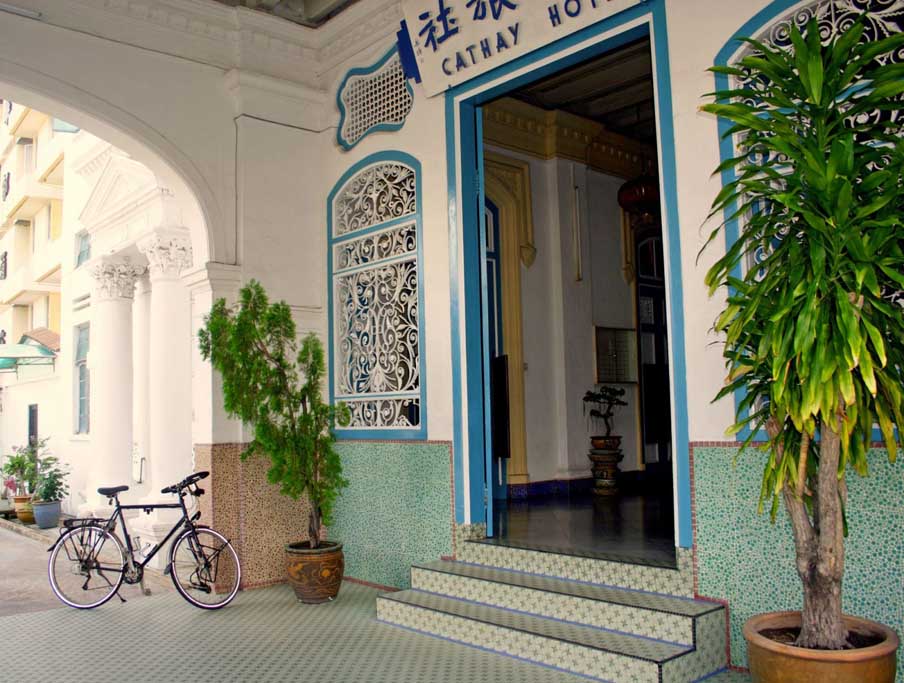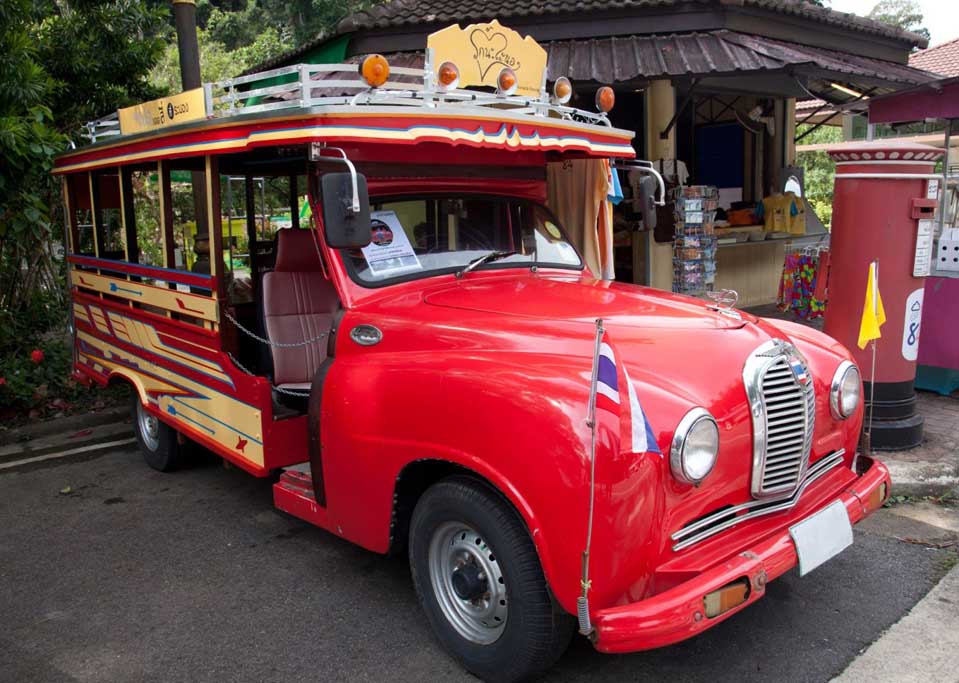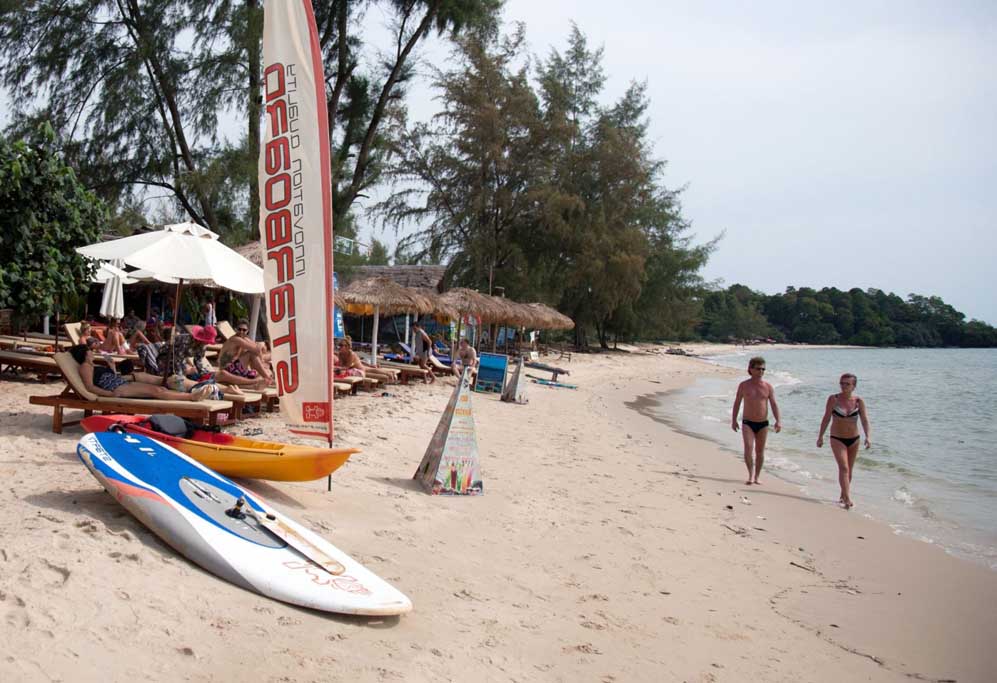Thailand is now recognised as the major hub that connects Australians with South East Asia. Award-winning travel writer and author, John Borthwick introduces us to some of South East Asia’s hidden gems, lesser known South East Asian towns, each with a fascinating history and culture, each a mere hop, skip and jump from Bangkok.
George Town, Penang, Malaysia
The streets of George Town on the island of Penang still echo with distant dialects and the fortunes made by early traders in tin, rubber and spices — Chinese, Malays, Indians, Armenians, Arabs and British.
The World Heritage-listed town, home today to three-quarters of a million citizens, is also completely contemporary, with wi-fi, good eating and boutique accommodation. Its streets of colonnaded Chinese and Indian shop-houses insist on being explored.
Ranong, Thailand
Here’s a slice of authentic, un-touristy Thailand. Ranong, an Andaman Sea port tucked between the southern tip of Myanmar and Thailand’s Isthmus of Kra, prospers mainly from fishing and trading.
Most travellers visit Ranong’s free, open-air Raksawarin hot springs — and they are hot — and then just enjoy this amiable town of 25,000 people, which happily lacks the blight of bling vs poverty too often found elsewhere. Offshore is a cluster of pristine national park islands that are excellent for day-trips and two low-key resort islands, Koh Phayam and tiny Koh Chang.
Bagan, Myanmar
With its 2500 temples, pagodas and monasteries covering 40sq km, Bagan could be Buddhism’s version of Benares, Rome and Mecca rolled into one. During this royal city’s centuries in the sun — the 11th to 13th — more than 10,000 shrines and religious institutions covered the plain. Shwe Sandaw, one of the most glorious piles, has jutted like an Egyptian pyramid above this plain for 900 years.
Hoi An, Vietnam
The French left Peugeots, berets, bakeries and good coffee. The Americans left junked aircraft, old Dodges and rock’n’roll. The Russians, nothing that anyone wanted. But long before these blow-ins, Hoi An, just south of Da Nang, welcomed trading ships from China, Japan and Europe over some 500 years.
Still one of Vietnam’s prettiest coastal settlements (and fittingly World Heritage-anointed) its Old Town preserves a legacy of merchant houses, temples and warehouses. A unique 19th century covered bridge still spans the stream that demarcated the old Japanese and Chinese communities.
Sihanoukville, Cambodia
The sunny beach resort of Sihanoukville keeps on losing syllables, with travellers first contracting it to “Snookyville” and then just “Snooky”. Sitting on the Gulf of Thailand 190 bumpy kilometres south-west of the capital Phnom Penh, Sihanoukville offers white sand beaches, backpacker boozers, casinos for losers and time-warp bargains for everyone with its food, drink and accommodation prices.
Kuching, Sarawak, Borneo, Malaysia
For more than a century Kuching was the capital of the famous “White Rajahs” of Borneo. What they left behind is one of the friendliest, most liveable provincial capitals in South- East Asia, not to mention a slew of romantic, if not eccentric buildings.
This riverside city (with truly flamboyant sunsets) is made for walking so pull on comfortable shoes and stroll its White Rajah wonders such as the Pavilion (1907), a three-storey, Italianate enigma that now houses the excellent Textiles Museum.
Luang Prabang, Laos
Luang Prabang sits on a peninsula in the Mekong River, bristles with temples and old French villas, and since scoring the jackpot of a World Heritage listing in 1995 has been thoroughly reborn.
Some 300km north of Vientiane and a proverbial thousand miles from care, this former retreat of Lao kings is a visitor magnet. Prosperity has ensured the preservation of its colonial streetscapes and 32 major Buddhist wats while also swelling the population to 50,000, thus making this the second-biggest city in Laos.
Chiang Rai, Thailand
Chiang Rai city in northern Thailand is a sleeper within the greater game of the country’s tourism industry (30 million annual visitors, and climbing). Not such a bad thing. Founded in 1262 and one of the oldest settlements in Thailand it retains a distinctive Lanna cultural identity in its temples, museums and music.
Home to 80,000 people, Chiang Rai has long been a jumping-off point for travellers exploring the north’s hill tribe regions and Mekong shores as well as upcountry Laos.
This article was first published in The West Australian newspaper.






